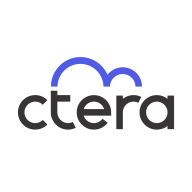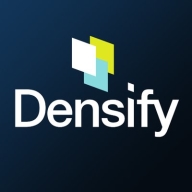

CTERA Enterprise File Services Platform and Densify compete in enterprise IT solutions. CTERA appears to have an advantage in cloud storage options and hybrid cloud support, whereas Densify leads with resource optimization and advanced analytics.
Features: CTERA offers robust cloud storage focused on security, integrated data management, and seamless file sharing. Its platform integrates well with existing infrastructure and supports hybrid cloud environments. Densify provides advanced analytics with automation features enabling efficient resource utilization and cost savings. Its proactive resource management and AI-driven recommendations are highly beneficial for optimizing IT environments.
Room for Improvement: CTERA could enhance its analytics capabilities to better compete with Densify’s advanced solutions. Improving automation features would also increase its appeal. Densify might work on simplifying its deployment process and consider offering more flexible pricing options. Increasing native integration support across diverse environments could make Densify more versatile.
Ease of Deployment and Customer Service: CTERA is known for its straightforward implementation and effective hybrid cloud integration, backed by responsive support. Densify emphasizes cloud-centric deployments, complemented by strategic consultation, offering personalized and proactive engagement to optimize IT infrastructure.
Pricing and ROI: CTERA’s competitive pricing delivers favorable ROI through efficient data storage and reduced management costs, appealing to those prioritizing initial savings. Although Densify potentially requires higher initial investment, its long-term cost reduction through optimized resource management improves ROI, attracting organizations focused on strategic IT efficiency.


The CTERA Enterprise File Services Platform provides a cloud-native global file system over public and private object storage, revolutionizing the world of hybrid cloud data solutions. Enhanced by a rich data services ecosystem, CTERA enables enterprises to gain full control of their data for optimal edge performance, data insight, and governance. The platform focuses on security, providing features like data encryption, access controls, and ransomware protection. Centralized management tools enable efficient data control and monitoring. The platform is being used to replace legacy NAS and file servers, especially at remote locations, and simplify backup and disaster recovery of file data while providing the flexibility of multi-cloud deployments with infinite scalability. CTERA is at the core of hybrid cloud transformations of some of the world’s largest banks, healthcare organizations, global media groups, and government agencies, in deployments that scale to tens of petabytes.
Densify is a hybrid cloud and container resource management platform that makes workloads self-aware of their precise resource requirements and automates the resource management and selection process. This solution helps you control your cloud spend and also helps your apps perform and scale better. Densify enables you to match your cloud requirements with the optimal cloud supply. Additionally, Densify is the only technology that leverages patented, predictive machine learning-powered analytics to perform advanced modeling of workload patterns, and provide precise optimization directives. It is ideal for cloud engineers, container platform owners, and IT finance.
Densify works by:
Densify Features
Densify has many valuable key features. Some of the most useful ones include:
Densify Benefits
There are many benefits to implementing Densify. Some of the biggest advantages the solution offers include:
We monitor all Cloud Migration reviews to prevent fraudulent reviews and keep review quality high. We do not post reviews by company employees or direct competitors. We validate each review for authenticity via cross-reference with LinkedIn, and personal follow-up with the reviewer when necessary.